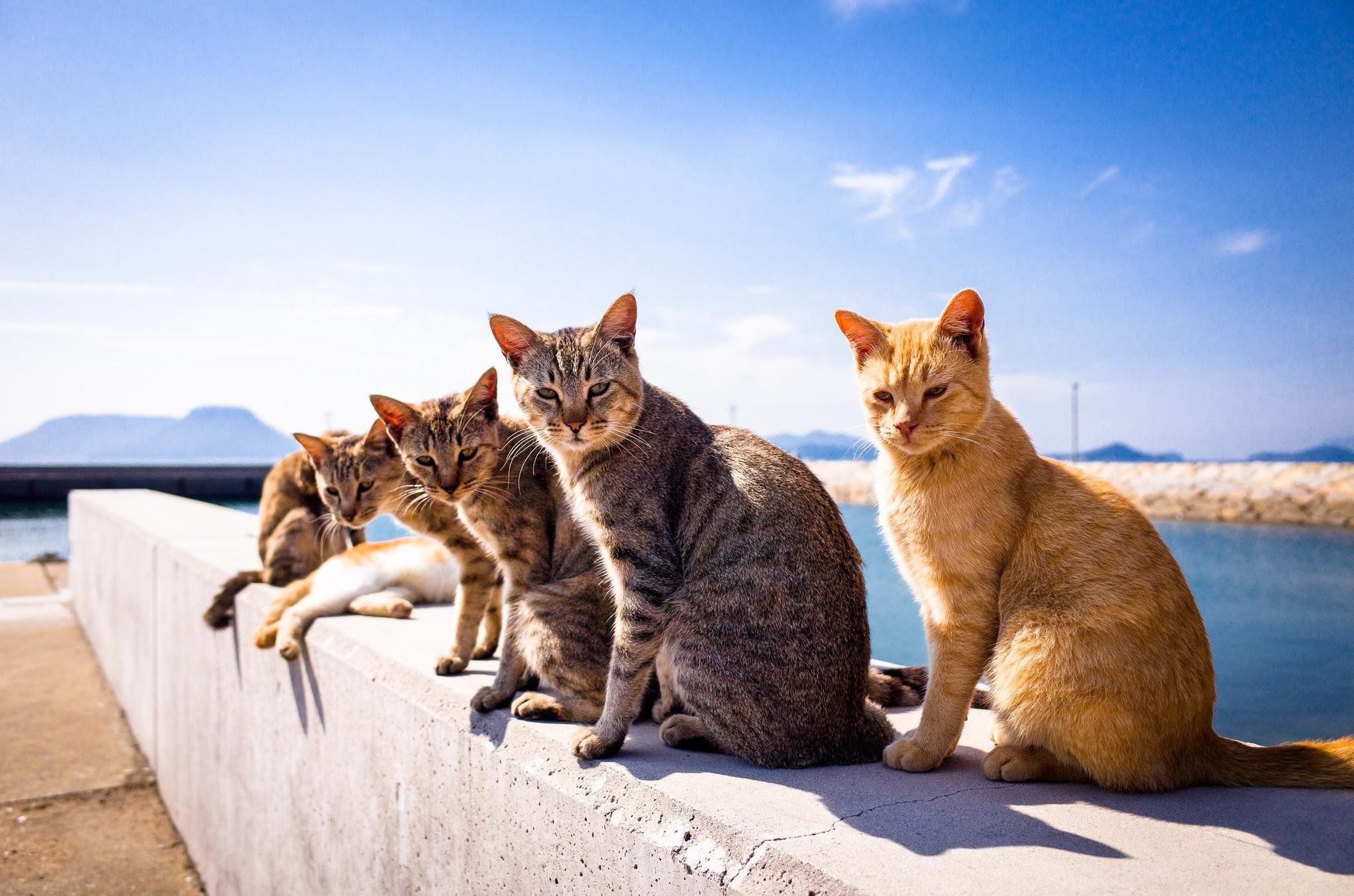Articles

Understanding the cat's character: sorting out temperaments and behavior
Each cat has a unique character and temperament, which affects his behavior and interaction with the world around him. Understanding these features will help to better establish contact with your pet, create a comfortable environment for him and choose the right methods of education. In this article we will consider the main types of temperaments of cats and how they affect their behavior.
✦ ✦ ✦ ✦ ✦
1. Why is it important to understand the character of a cat?
Cats are independent and self-reliant animals whose behavior can be very different depending on their temperament. Understanding your cat's personality will help:
- Build trust: Knowing how your pet reacts to different situations will help you better understand their needs and avoid conflict.
- Choose the right approach to parenting: Some cats are easy to train and willing to interact, while others need a gentler approach.
- Create comfortable conditions: Understanding how active, sociable or independent your cat is will help you design a space that fits his lifestyle. Read More https://www.obozrevatel.com/press-release/set-zoomarketov-masterzoo-vyipustila-podarochnyie-boksyi-dlya-domashnih-pitomtsev.htm .
✦ ✦ ✦ ✦ ✦
2. types of cat temperaments
Although each cat is unique, they can be divided into four basic temperament types: sanguine, phlegmatic, choleric, and melancholic. These types help you understand how your cat will behave in different situations and what you can expect from him.
Sanguine
Sanguine cats are cheerful and active pets. They love socializing, are playful and easily adapt to new conditions. Sanguine cats quickly find a common language with people and other animals, they are always interested in studying the world around them.
Behavioral peculiarities:
- Love to play and spend time with their owners.
- Quickly adapt to new environments, people and animals.
- Often require attention and active participation in games.
Examples of breedsSiamese cat, Abyssinian cat, Bengal cat.
Phlegmatic
Phlegmatic cats are calm and poised pets who prefer stability and predictability. They like to relax and spend time in a quiet, comfortable environment. These cats are not overly active and prefer to observe things from the sidelines.
Behavioral peculiarities:
- Calm, patient and rarely show signs of aggression.
- They like to spend time alone, but don't mind affection and attention from their owner.
- Less need for active games and entertainment.
Examples of breedsBritish shorthair cat, Persian cat, Scottish lop-eared cat.

Choleric
Choleric cats are energetic and emotional pets. They can be impulsive, easily agitated and often behave unpredictably. Cholerics require a lot of attention, it is difficult to calm them down if they start to show activity. Education of such a cat requires patience and constant supervision. Tips from owners of cats with this temperament https://gazeta.ua/ru/articles/promotion/_kachestvo-vody-v-akvariume-samye-vazhnye-momenty/1141019 .
Behavioral peculiarities:
- They are constantly on the move, quickly switching from one activity to another.
- Prone to unexpected displays of emotion - from sudden bursts of activity to sudden calm.
- Can be persistent and stubborn.
Examples of breedsSphynx, Oriental cat, Burmese cat.
Melancholic
Melancholy cats are sensitive and quiet pets that often show caution and restraint. They can be withdrawn and indecisive, especially in stressful situations or unfamiliar surroundings. Melancholics need a gentle and caring approach, they value stability and security.
Behavioral peculiarities:
- Sensitive to change and stress, prefer a calm environment.
- Prone to solitude, may avoid noisy and active places.
- Slow to adjust to new people and animals, but remain loyal to their owners.
Examples of breedsRussian blue cat, Neva masquerade cat, Burmese cat.
✦ ✦ ✦ ✦ ✦
3. How does temperament affect a cat's behavior?
A cat's temperament has a direct impact on its behavior in everyday life. It is important to take into account the individual characteristics of the pet when interacting with him in order to provide him with a comfortable living environment.
- Activity and gamesSanguine and choleric dogs require more exercise and love to play. Toys, scratching posts, climbing areas and interactive entertainment will suit them. Phlegmatics and Melancholics will be happy with quieter games or even prefer to relax in a cozy place.
- SociabilitySanguine and choleric cats are more sociable and active with people and other animals. They willingly make contact and can take the initiative in socializing. Melancholics and phlegmatics are less contactable, they like solitude and may not be as open to interaction.
- Stress response: Cholerics and melancholics can react strongly to stressful situations - loud noises, changes in the house or new faces. Sanguine people, on the other hand, adapt more quickly to change and can handle stress more easily.
- Affection and attentionSanguine cats love attention and are always ready for play or affection. Phlegmatic cats enjoy solitude, but will not refuse the gentle attention of their owner. Melancholics require gentle and quiet handling, avoiding rudeness and noise.
✦ ✦ ✦ ✦ ✦
4. How to consider the cat's temperament in care and training?
Understanding your cat's temperament will help you choose the right approach to care and training. Here are some suggestions on how to tailor care based on your cat's temperament:
- Sanguine: These cats require a lot of socialization and activity, so provide them with plenty of toys and time to play. Raising sanguine cats should be based on positive reinforcement and a variety of activities.
- Phlegmatic: Provide your cat with a calm and predictable environment. These pets do not need intensive play, they just need a comfortable place to rest and regular attention from their owner.
- Choleric: Try to channel your choleric cat's energy in a constructive way. He will need active games, long walks (if the cat is on a leash) and activities that will help him to release his energy.
- Melancholic: These cats require more time to adapt and gentle handling. Create a quiet, calm atmosphere for them, avoid unnecessary stress and sudden changes. Training should be gentle and unobtrusive.
A cat's temperament directly affects its behavior and interaction with people. Understanding your cat's temperament will help you build a strong relationship with him, choose the right approach to care and create a comfortable living environment. Each type of temperament requires an individual approach, so it is important to take into account the personal characteristics of your cat and respect his needs. More interesting articles about our pets https://if.informator.ua/2023/12/14/perevagy-ta-riznovydy-kormiv-dlya-sobak-savory/ .






